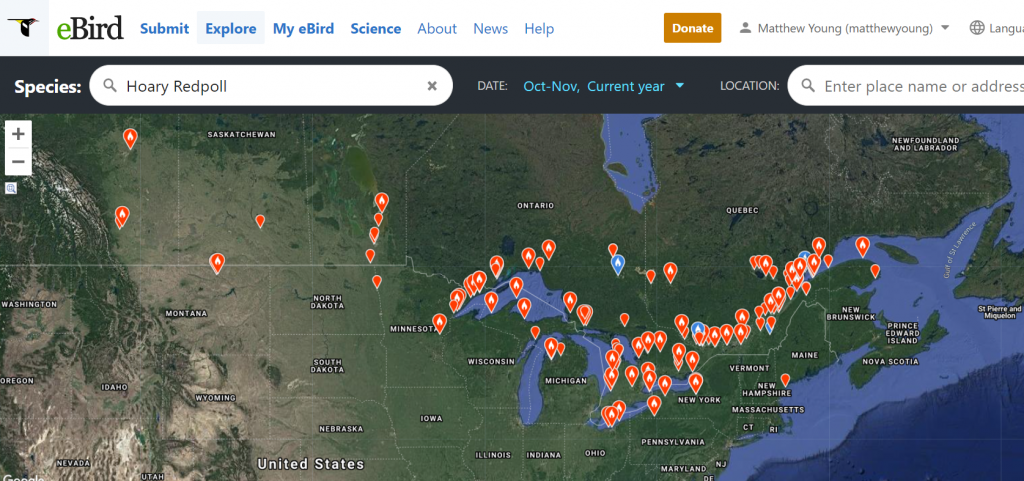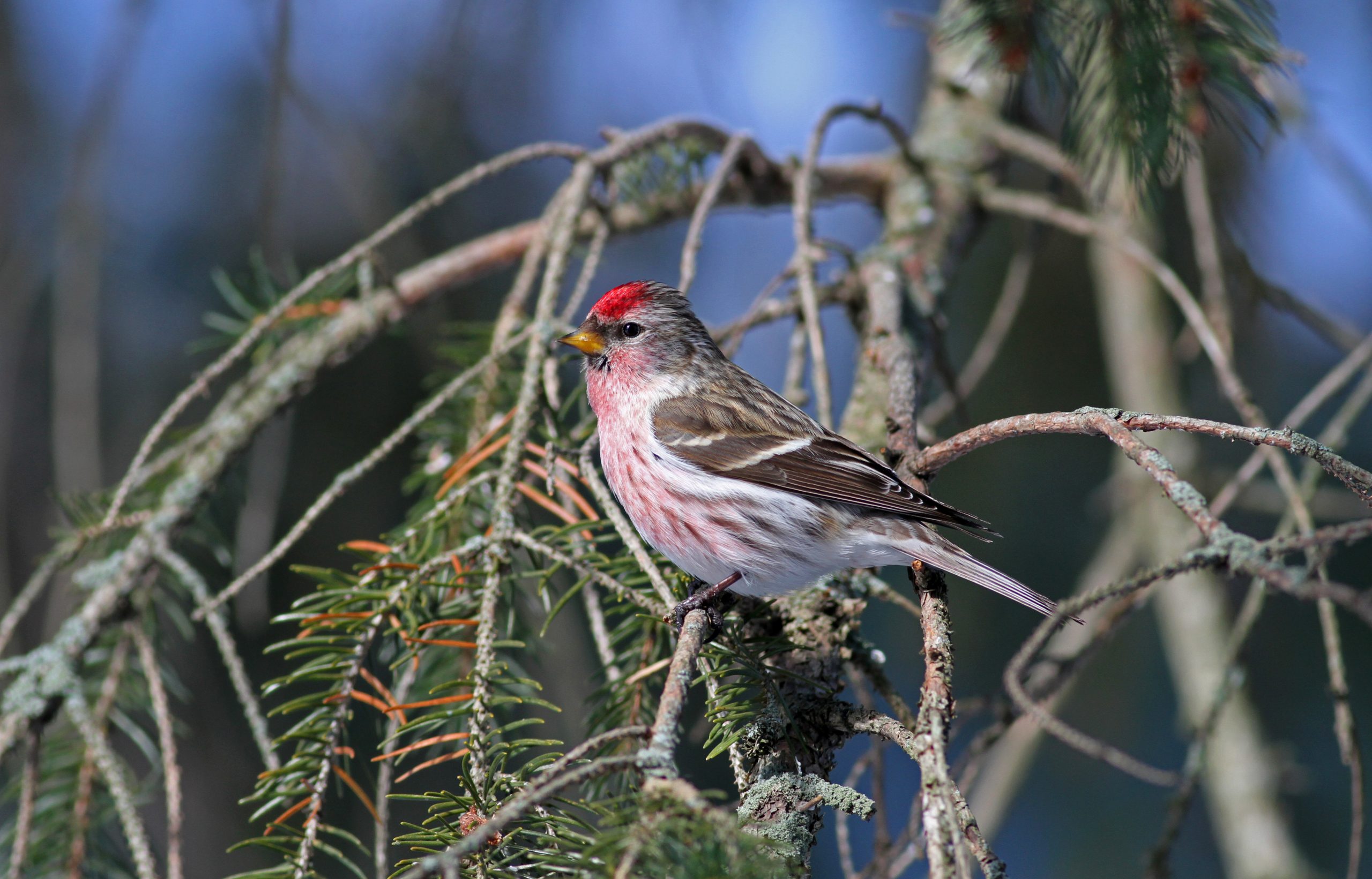By Tyler Hoar and Matthew Young:
Redpolls are on the move this winter, and we’re perhaps looking at their biggest push south in almost a decade. Why is this, you ask? Redpolls follow birch and alder crops, and there was scattered, limited food to keep them in the boreal region, with only swamp birch producing some food. When there isn’t ample food to support the redpoll population across Canada, redpolls make significant southward irruptions into the United States like they have this year.
In the eBird map below you can see they’ve already moved south into Delaware, Ohio, Indiana and parts of the northern Plains. Back in early October FiRN wrote here about a couple of Common Redpoll sightings in New Mexico, a state where only a few redpoll records exist. While these were clearly outliers, it’ll be interesting to see how far south they move in the western United States, too. Typically irruptions into the United States alternate between eastern U.S. and Western U.S (see animated eBird maps for Oct-Nov 2012-2020 at very bottom), but in some years they do occur across the East, the Plains, Rocky Mountain States, and even occasionally the Pacific Northwest. Redpolls almost never invade the west in the numbers they do in the East, but it’ll be interesting to see if this year approaches the 2012 invasion (see maps at end of article).
Look for Redpolls to be foraging in a wide variety of habitats and food sources. Redpolls will readily use seed sources like goldenrods and asters within weedy fields and often in ornamental birches in people’s front yards or roadsides. Any seed pod laden birch or alder (paper, gray, yellow and black birches and speckled and red alder) should be watched this winter. Redpolls prefer well stocked nyjer/thistle socks or tube feeders, but will also fairly readily feed on black oil sunflower as well.

Will this irruption, which is still in its early stages, push into the Carolinas, southern Plains, and Western states too? Will this year’s irruption of redpolls involve a number of frosty-colored Hoary Redpolls? Will all of the boreal finch species irrupt in the east, making for a “superflight”? So far numbers of Hoary Redpolls seem to be coming too, so stay tuned here for more as this story will continue to evolve over the coming weeks and months.
Cover Photo Credit Jay McGowan
FiRN is a nonprofit, and has been granted 501c3 status. FiRN is committed to researching and protecting these birds and other threatened finch species like the Evening Grosbeak and Rosy-finches, and if you have been enjoying all the blogs and identifying of Red Crossbill call types, redpoll subspecies and green morph Pine Siskins FiRN has helped with, please think about supporting our efforts and making a small donation at the donate link below.
The below eBird maps show how far Common Redpolls have migrated into the lower 48 Oct-Nov for each year from 2012-2020. For more on the Common Redpoll see https://finchnetwork.org/species/redpolls/common-redpoll or Hoary Redpoll https://finchnetwork.org/species/redpolls/hoary-redpoll .

